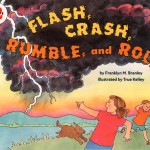
Readers & Thinkers: The 2005 Nobel Prize in Economics. What Game is the Nobel Committee Playing?
Posted by ludw1086 on Sep 7, 2012 in Readers & Thinkers | Comments Off on Readers & Thinkers: The 2005 Nobel Prize in Economics. What Game is the Nobel Committee Playing?Dear All:
WHO?
Robert Aumann and Thomas Schelling
“for having enhanced our understanding of conflict and cooperation through
game-theory analysis”
I completely guessed incorrectly this year. In fact, it’s the first year that the candidates were not even on my list. I guess it shows how hard it is to predict the Nobel prize in economics.
WHY?
I believe the award of the Nobel prize was motivated more by “politics” this year than any Nobel prize in economics previously awarded in economics. It was specifically related to the objection of the war in Iraq, the conflict over North Korean nuclear weapons, and the objection to war in general.
In fact, the Nobel committee’s advanced document on the prize begins with:
“Wars and other conflicts are the main source of human misery. A minimal amount of cooperation is a prerequisite for a prosperous society.”
In some ways, this is unfortunate, since there is a Peace prize to express their political views. In some ways, it’s very positive, since it gives hope to any living economist, young or old, that they should pursue the beauty of their ideas because not only may it help society, but it may lead to a Nobel prize.
WHAT?
SCHELLING
His work involved the application of game theory to real-world phenomena; in particular war. He examined to what extent certain actions by players or countries would influence the outcome of the game. That is, strategy choices could influence outcomes. Some famous real-world examples might include Reagan’s deployment of missiles in Germany during the Cold War and negotiations with Gorbachev. The commitment of such missiles may actually have resulted in a rational game theoretic cooperation from Russia.
Schelling emphasized the difference between “credible commitments” and “words”. Although he didn’t mention it in his work, the concept may explain one of the reasons the mafia kills unloyal people rather than giving them a warning. For the game-of-trust to work, commitment must be credible. Because the mafia will hire other hitmen in the future, killing is one way in which credible commitments to deviating can be established. That is, to establish credibility, you’ve got to kill some of the deviators. This may actually lead to a situation where less killing is required in the future. A more typical example is that of “burning bridges”. The idea is that there is a bridge connecting you to an island, where the enemy is. You cross the bridge and begin fighting. If the enemy believes that they can fight enough to scare you in retreating back across the bridge, they may do so. If, instead, you burn the bridge after you cross it, then their tactics may change, because they realize that you have committed to staying to fight until every last man is dead (or you’ve lost) or you’ve won.
Schelling also emphasized the importance of repeated interaction in causing verbal and other types of softer agreements to be enforceable. It’s one of the reasons we prefer to lend money to our friends and not casual acquaintances. Some people use the line “I trust my friend.” What they probably mean deep inside is “My friend and I are going to see each other again and so if he doesn’t pay me back, I’ll make him pay for lunch.” With a stranger or a casual acquaintance you won’t have this option. Thus, repeated interaction can lead to greater “trust” or more “cooperation” overall.
Finally, Schelling also applied game theory on issues related to spatial segregation, known as the Schelling model.
AUMANN
His work was related to mathematical concepts applied to the area of repeated games or interactions. In game theory, there is the so-called “Folk Theorem”, which basically says that rational players should be able to “cooperate” even in a game that does not lead to cooperation if it were played once, so long as the repeated interactions between players are long enough. Many people understood the basics of this already. It makes sense. If the gains to cooperating over a long period outweigh the gains from cheating in a short-period, it’s better to cooperate. Aumann formalized the concepts mathematically into what might be called “the generalized Folk Theorem”.
In the late 1960s, Aumann worked with others on issues related to war applications of these concepts. He also worked on the mathematics of “correlated equilibria” which consists of situations where one player’s strategies are correlated with another player’s strategies—a more realistic depiction of the world.
AND SO?
I really didn’t think another Nobel prize would go to Game Theory after the award to Nash, Selten, and Harsanyi in 1994. I was wrong. But let’s be clear, this isn’t the same prize. For curiousity, I picked up the leading book in game theory and read the introduction. The introduction does mention Nash, Selten, and Harsanyi. It does not mention Schelling or Aumann. However, their work is clearly referenced in the bibliography, as well as in other game theory books.
Nevertheless, I find it inspiring, because it shows that realistic applications and modifications of ground breaking work has merit. And on this Columbus day in America, we should all be reminded that it’s not just the guy who crashes his ship on new land that matters, but also the people who build and improve the city.
For more information:
http://nobelprize.org/economics/laureates/2005/index.html
Sincerely
Ludwig
Note: The year after the prize was announced, Schelling was honored at the AEA annual meeting and gave one of the best speeches I have ever heard about the work he had done to win the Nobel prize. It was truly inspiring.






